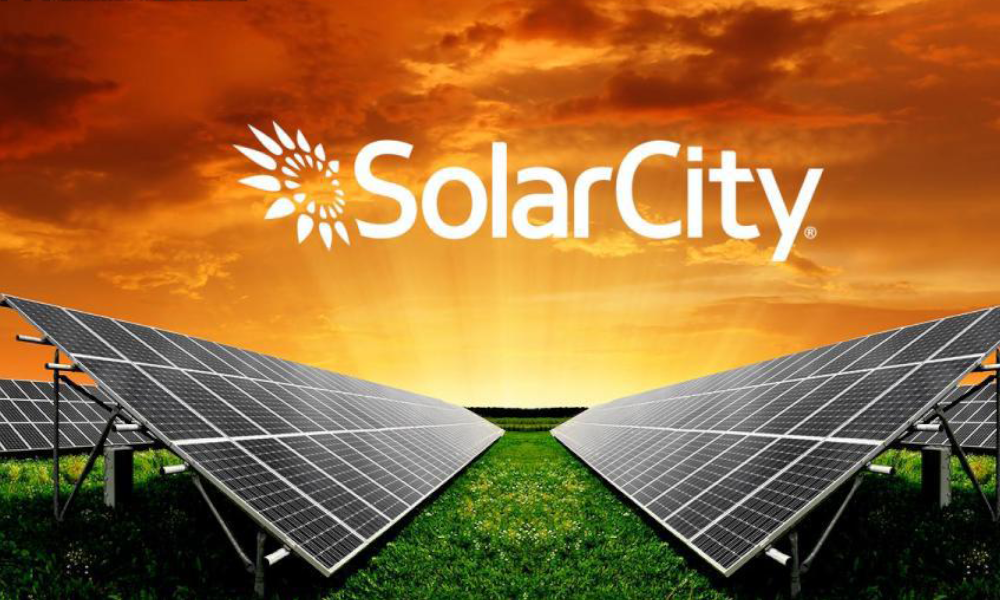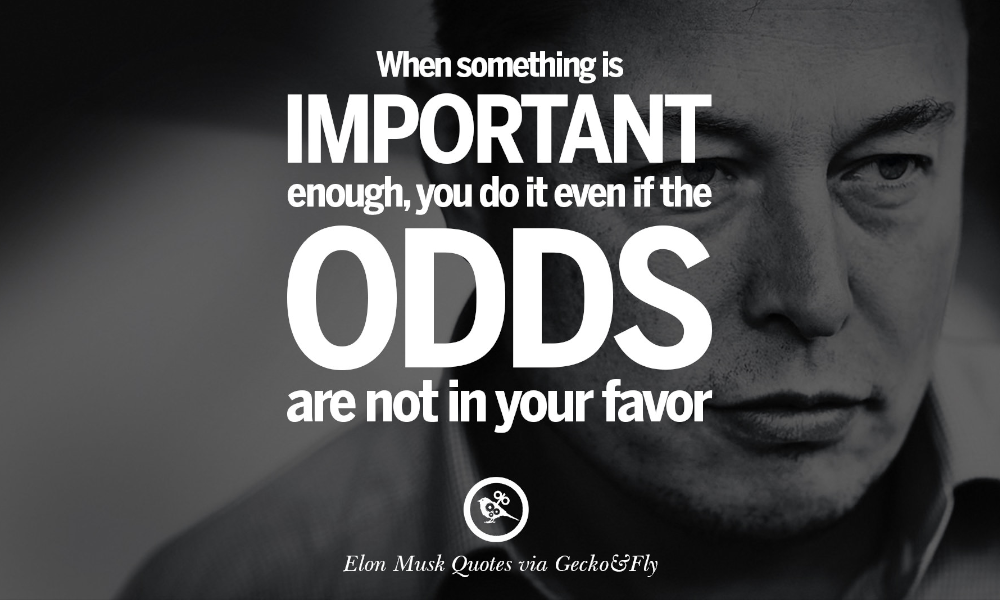Elon Musk is the brains behind Paypal, SpaceX, Tesla, Solar City and Hyperloop. With his technical genius and yearning to save the world, he is perhaps the closest humanity has to a real-life Iron Man, a view that many internet memes share! The New York Times believes Musk has becomes one of a new breed of “thrillionaires”, elite tech entrepreneurs using their fortunes to turn science fiction dreams into reality. In this case study, we share his thrilling, fascinating story, plus some of Musk’s wisdom to help fellow budding startups and game changers.
The Making of Elon Musk
Musk is a hybrid himself. The son of a Canadian mother and South African Father, he was born in Pretoria, South Africa in 1971. His tech and entrepreneurial instincts were honed from a young age. At 12, he taught himself how to program and created a game called Blastar, which he sold to his friends, making a cool $500 of extra pocket money.
Musk as inquisitive by nature, commenting: “I would just question things… It would infuriate my parents… That I wouldn’t just believe them when they said something ’cause I’d ask them why. And then I’d consider whether that response made sense given everything else I knew.” This relentless drive and curiousity would become a hallmark of his later success.
In 1992, he studied business and physics at the University of Pennsylvania. After that he headed to Stanford to pursue a PhD in energy physics. It was at this point, he pulled a “Mark Zuckerberg”. The internet boom was too big for Musk to ignore, so after just 2 days, he dropped out of college and at the age of 24, he launched his first company Zip2.
Zip 2 & PayPal
Zip 2 was an online city guide, which featured content for the new websites of The New York Times and The Chicago Tribune. He devoted everything to make it succeed. At one point he lived in the same rented office as his company’s HQ, sleeping on a futon couch and showering at the local YMCA. He commented: “failure is an option here. If things are not failing, you are not innovating enough.” His risk and drive paid off. In 1999, a division of Compaq bought the company for $307 million in cash making Musk a millionaire at the tender age of 28.
But Musk wasn’t stopping there. He had no intention to settle down, enjoy the easy life and buy a time-share in the Caribbean! In the same year, he co-founded X.com, an online payments company. A further acquisition lead to the creation of Paypal.
Paypal grew rapidly in 2001, driven by the presence of ebay. The internet was new and people were sceptical about entering their credit card details, especially when buying and selling to strangers. Paypal capitalised on this offering a secure, fast service. In 2002 Paypal went public and a year later, ebay bought the company for $1.5 billion. Owning 11%, this netted Musk a $165 million stake.
Musk was 31 and had already sold two multi-million businesses. It was a time of reflection, he commented: “going from PayPal, I thought: ‘Well, what are some of the other problems that are likely to most affect the future of humanity?’ Not from the perspective, ‘What’s the best way to make money?'” Musk was entering a new era of his life but when you have already gone global what else can be achieved?
From Global to Intergalactic 
Musk had long been fascinated by life on Mars. Along with Avatar director James Cameron, he was a member of the Mars society, a non-profit, for the exploration of the red planet. In, 2002 he founded Space X with the goal of building spacecraft for commercial space travel. 6 years later, NASA awarded the company the contract to handle cargo to the International Space System, with the eventual goal to handle astronauts in the future.
Money was not the goal for Musk. He was fascinated by the opportunity of colonizing Mars, creating automated greenhouse gases and becoming a self-sustaining ecosystem. Scared by the Science of climate change, Musk believed Mars may be the only future for humanity and he was the man to make it happen. It’s a story that sounds like it was taken straight from a comic strip, and for this real-life Iron Man to save the world, he had to find a way to make space travel more affordable. That’s when he learnt something that shocked and outraged him.
The prices per rocket launch ranged from $15 million in Russia to $65 million in the USA. These seemed way too high. He calculated the cost price of all the parts and discovered this was just 2% of the US launch price! Space had become bureaucratised, with no competition and lobbying efforts to prevent new players entering the market. A new way was needed.
Space X Goes to Infinity & Beyond
SpaceX began to become a success. In 2012, it made history when it launched its Falcon 9 rocket into space with an unmanned capsule. The vehicle went to the International Space system with 1,000 pounds of supplies for the astronauts. This was the first time a private company had achieved this. Musk commented: “I feel very lucky. … For us, it’s like winning the Super Bowl.”
On April 08, 2016, after four unsuccessful attempts (when he had only secured funding for 3) SpaceX made history by landing the first stage of its Falcon 9 rocket on a drone ship at sea and in March 2017, SpaceX enjoyed another breakthrough with the successful test flight and landing of a Falcon 9 rocket made from reusable parts, a development that opened the door for more affordable space travel.
Musk’s vision and drive is profound: “There’s a fundamental difference, if you look into the future, between a humanity that is a space-faring civilization, that’s out there exploring the stars … compared with one where we are forever confined to Earth until some eventual extinction event.” He once also said, “I would like to die on Mars, just not on impact!”
From Oil to Electric 
Space travel was Musk’s end goal for humanity but we also had to take care of our little blue planet right now. Musk believed that the world has become too dependent on oil. This had led to a myriad of problems from rapid climate change to geopolitical tensions to higher transport costs. Musk believed that a shift from oil to electric could make a difference. So, in 2003, he formed Tesla.
Five years on, in 2008 he unveiled the Roadster, a car capable of 0 to 60 mph in 3.7 seconds, as well as travelling 250 miles between charges. All seemed well but under the bonnet, this was a strained year for Musk. In 2008, he also filed for divorce and to save Tesla from bankruptcy he had to sell his stake in software company Everdream and invest his last $20 million to save the company, even offering personal guarantees to give customers refunds if the business failed.
But with Musk’s tenacity and a large firing of poor performing staff, he got Tesla back on the road and picking up speed. It partnered with Toyota and in 2010, announced its IPO, raising $226 million. In April 2017, it was announced that Tesla had surpassed General Motors to become the most valuable U.S. car maker. The news was an obvious boon to Tesla, which was looking to ramp up production and release its Model 3 sedan later in the year.
Critics say Musk is trying to do the impossible with Tesla. To which he replied: “When Henry Ford made cheap, reliable cars, people said, ‘Nah, what’s wrong with a horse?!’” Great leaders have always had to succeed despite opposition from mediocre minds, Musk is no exception. The next frontier for Tesla is taking on Google, Apple and more for self-driving cars.
SolarCity
Not content with PayPal, SpaceX and Tesla, in 2006 Musk launched SolarCity, which provides solar powers systems for homes, businesses and governments. Installing solar could be a high upfront cost for people, before they saw returns on their energy savings, so Musk created an innovative solution. The “MyPower” loan program, provide a lease of solar services and a solar purchase agreement so people could manage the investment over time.
In May 2008, the company built solar-powered electric systems for British Motors and eBay to power their headquarters and servers. Critics are sceptical about solar but analysts consider Musk’s belief in the company to be the primary reason for its phenomenal success. If the creator of SpaceX and Tesla Motors bets on solar, then there must be something in it. The Wall Street society even came up with a term for this investment bias: The Musk Effect.
With Tesla’s electric car and SolarCity’s sun powered energy, Musk was leading the way in a renewable future for the planet. Some may say, just one man had accomplished more than all the politicians combined. But how could Musk turn this energy into synergy and harness his expertise in engineering, physics and entrepreneurship into a new venture?
Hyperloop – The End of Traffic? 
In 2013, Musk launched a new idea to change how we travel on land forever. Road, subway and over ground rail have been the modus operandi for decades but they all have one limitation. Tires against the track cause friction. To go faster requires more thrust and usually more oil and carbon dioxide into the air. Plus, roads and rails are very expensive to build for the tax payer.
So, Musk pioneered Hyperloop. Let’s geek out on how it works. Hyperloop is an enclosed solar powered high-speed system, driven by linear induction motors and air compressors. It uses an electro-magnetic impulse to move the pods without friction, so it can travel faster.
The end-goal is to reach speeds of 700mph and travel the 382 miles (614km) from Los Angeles to San Francisco in just 30 minutes, so one day travelling between cities will be as fast as between metro stops. The total cost is estimated to be $6 to $10 billion. If each capsule can hold 28 people and there is a one-way ticket price of $20, the project aims to reach payback in 20 years, once the number of passengers reaches 7.4 million.
The system also integrates the best of Musk’s ventures. The motors and electronics from Tesla, the engineers from SolarCity for the panels and the SpaceX materials that have been tested in Space. In July 2017, they successfully tested their first high-speed run and Musk is lobbying for the LA to San Francisco route to be built in the next 5 years.
The Boring Company
America is known as the ‘land of the car’, so what does Musk envision for the future here? In a recent TED talk, he dismisses the flying car concepts of Futurama, dryly observing that driving in traffic is already a stressful experience and cars flying overhead doesn’t seem too anxiety-reducing!
His vision was to go underground, and travel people in their cars via high-speed tunnels. With a self-deprecating wit, he named his new venture for boring and building tunnels as ‘The Boring Company’.
Elon’s Advice to Entrepreneurs
It’s incredible that Musk has achieved all this at just 46. He is the tech genius of our time and an inspirational for all budding entrepreneurs, tech stars and game-changers. In this final section, we share some of Musk’s best entrepreneurial thoughts.
ON PURPOSE
“People should pursue what they’re passionate about. That will make them happier than pretty much anything else. People work better when they know what the goal is and why. It is important that people look forward to coming to work in the morning and enjoy it. I’m interested in things that change the world or that affect the future and wondrous, new technology where you see it, and you’re like, ‘Wow, how is that even possible?’
ON GAINING FUNDING
“The best way to attract venture capital is to come up with a demonstration and take it as far as you can. See if you can sell that to real customers, the further along you can get, the more likely you are to get funding. I always invest my own money. I don’t believe in the whole thing of just using other people’s money. I don’t think that’s right. I’m not going to ask other people to invest in something I’m not prepared to do myself.”
ON INNOVATION
“The problem is that at a lot of big companies, process becomes a substitute for thinking. You’re encouraged to behave like a little gear in a complex machine. Frankly, it allows you to keep people who aren’t that smart or creative. I think it’s very important to have a feedback loop, where you’re constantly thinking about what you’ve done and how it could be better.”
ON MINDSET
“If something has to be designed and invented, and you have to figure out how to ensure that the value of the thing you create is greater than the cost of the inputs, then that is probably my core skill. What makes innovative thinking happen?… I think it’s really a mindset. You have to decide. Optimism, pessimism. Screw that, we’re going to make it happen!”
Sources:
https://www.biography.com/people/elon-musk-20837159
http://www.businessinsider.com/best-elon-musk-quotes-tesla-2013-11
https://astrumpeople.com/elon-musk-biography/
http://www.notablebiographies.com/news/Li-Ou/Musk-Elon.html







